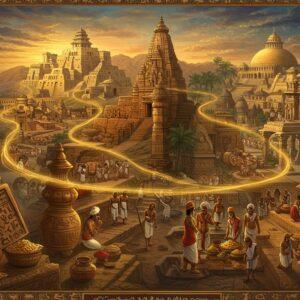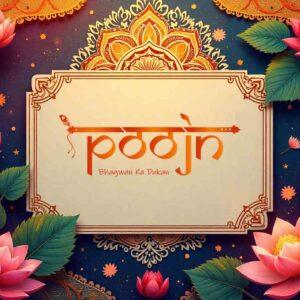
The Pandya Dynasty, a prominent power in South India for centuries, left an indelible mark on the region’s culture and history. This dynasty, known for its maritime strength and patronage of the arts, is recognized by its distinct symbols and insignia. This blog delves into the rich symbolism of the Pandya Dynasty, exploring the significance of their emblem, flag, and coins, offering insights for those fascinated by history and cultural heritage.
A Historical Overview of the Pandya Dynasty
The Pandya Dynasty’s reign spanned several centuries, beginning as early as the 6th century BCE. They were key players during the Sangam age, a period of significant literary and cultural flourishing in Tamil Nadu. Their rule extended through the early and later medieval periods, witnessing both prosperity and conflict. The Pandyas nurtured Tamil literature, art, and architecture, with their capital, Madurai, serving as a vital cultural center.
Key Aspects of Pandya Rule:
- Timeline: The dynasty’s influence stretched from around the 6th century BCE through various periods, including the Sangam age, early medieval era, and later medieval times.
- Prominent Rulers: Numerous Pandya kings contributed significantly to Tamil culture and political landscape, leaving a lasting legacy on the region.
- Cultural Center: Madurai, the Pandya capital, flourished as a hub of art, literature, and religious practices, fostering a unique cultural identity.
The Fish Emblem: A Symbol of Prosperity and Power
The primary emblem of the Pandya Dynasty was the fish, often depicted as twin fish (Matsya). Symbolizing fertility, prosperity, and the dynasty’s maritime dominance, this emblem is found on various artifacts, including ancient Tamil literature, temple walls, inscriptions, and seals. As detailed in historical accounts, the fish emblem replaced an earlier symbol of a horse with a Bodhi tree, marking a shift away from Buddhism.
Highlights of the Fish Emblem:
- Symbolism: The twin fish (Matsya) represented abundance, prosperity, and the dynasty’s connection to water, reflecting their naval power.
- Meaning: The fish symbolized the dynasty’s control over coastal regions and their successful maritime trade, which contributed to their economic prosperity.
- Ubiquity: The fish emblem was pervasive in Pandya art, architecture, and literature, highlighting its central role in their cultural identity.
The Pandya Dynasty Flag: Meen Kodi
The Pandya Dynasty’s flag, known as ‘Meen Kodi,’ prominently featured the twin fish emblem. This flag embodied their sovereignty and was displayed during significant events and battles. Ancient texts detail its design and significance, further emphasizing its importance in Pandya culture.
Key Features of the Meen Kodi:
- Design: The twin fish emblem was the central motif of the Meen Kodi, signifying the dynasty’s power and authority.
- Symbolism: The flag represented the Pandya kingdom’s sovereignty and was a rallying symbol during times of war and peace.
- Historical Context: The Meen Kodi served as a powerful visual representation of the Pandya Dynasty’s authority and cultural identity during important ceremonies and battles.
Pandya Dynasty Coins: Reflections of Trade and Economy
The coins minted by the Pandya Dynasty provide valuable insights into their economic activities and trade connections. The twin fish emblem frequently appears on these coins, serving as a royal insignia. Studying these coins reveals information about their types, composition, inscriptions, and the trade routes they frequented.
Insights from Pandya Coins:
- Royal Insignia: The presence of the twin fish emblem on the coins marked them as official currency of the Pandya Dynasty.
- Economic Indicators: The coins offer valuable clues about the Pandya economy, trade practices, and the extent of their influence.
- Historical Records: The inscriptions and designs on the coins provide valuable historical data about the rulers, their reign, and the cultural context of the time.
Religious and Cultural Significance of the Symbols
The symbols of the Pandya Dynasty, particularly the twin fish, held deep religious and cultural meaning. The fish is linked to Meenakshi, the revered goddess of Madurai, who is believed to have fish-shaped eyes and is considered the daughter of a Pandya king. These symbols played a significant role in temple rituals and influenced broader cultural practices.
Cultural and Religious Connections:
- Divine Association: The fish emblem’s connection to Goddess Meenakshi further elevated its importance within Pandya culture and religious practices.
- Cultural Impact: The symbols influenced rituals, traditions, and artistic expressions, reflecting the dynasty’s deep cultural impact.
- Ritualistic Significance: The fish emblem was incorporated into various temple ceremonies and religious practices, solidifying its sacred status.
Poojn.in: Connecting You to the Pandya Legacy
Poojn.in, India’s leading online store for spiritual and cultural products, offers a wide selection of items that resonate with the rich traditions of the Pandya Dynasty. Explore our collection of brass idols, puja items, and religious artifacts, allowing you to connect with this vibrant heritage.
- Original Athizay Stone Shiva Lingam and Nandi Set: Connect with the divine through this beautifully crafted Shiva Lingam and Nandi set.
- Pure Copper Snake: Adorn your puja space with this intricately designed copper snake, symbolizing protection and spiritual energy.
- Small Beads Bel Mala: Enhance your spiritual practice with this traditional Bel Mala, crafted with high-quality beads.
- Tulsi Mala with Radha Locket: Embrace the divine with this sacred Tulsi Mala, adorned with a beautiful Radha locket.
Conclusion: The Enduring Legacy of the Pandyas
The symbols and insignia of the Pandya Dynasty are more than just historical relics; they are powerful reminders of a rich and influential past. The twin fish, the Meen Kodi, and their intricately designed coins serve as a testament to the Pandyas’ contributions to Tamil culture, art, and architecture. By appreciating these symbols, we honor their enduring legacy and the significant role they played in shaping South Indian history.


